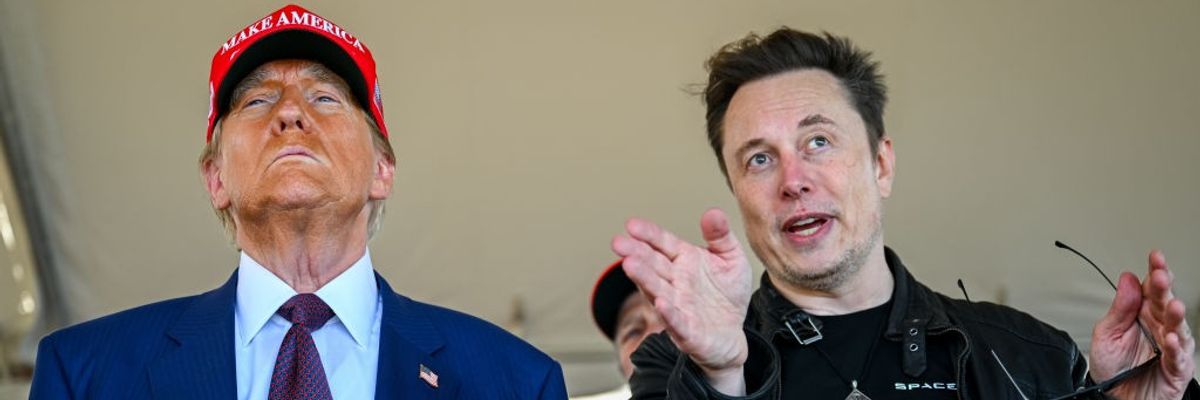U.S. President Donald Trump, Elon Musk, and their ilk are returning the U.S. to the Gilded Age of robber barons, replete with railroad monopolies and no union protections. They are bringing us back to a time before the Progressive movement had instituted the first real wave of social reforms, which were later widely expanded by New Deal programs. These initial reforms offered workers’ compensation, free school meals for poor children, regulated working hours, and put antitrust laws on the books. They protected the everyday person, white- and blue-collar alike, and were a setback for the ultra-rich. For generations afterward, the ultra-rich have been pushing to overthrow the Progressive Era’s and the New Deal’s utilitarian reforms.
It started with deregulation in the 1970s and was then magnified during Ronald Reagan’s neoliberal presidency. The talking points behind deregulation duped people through bastardizing the concept of “freedom.” The U.S. is a free country, the argument goes, so there shouldn’t be regulation. Yet deregulation, in this sense, is focused on giving businesses and corporations free rein, screwing the rest.
Inevitably, the neoliberals’ free trade policies, the gutting of unions, the reducing of social programs, and the lowering of taxes for the very wealthy led to wide-scale disillusionment. It birthed the Occupy Wall Street and Tea Party movements.
That brings us to today, where there is one option: resistance everywhere.
The Tea Partiers, mostly unwittingly, pushed for the policies of the late 19th-century robber barons, free of any regulation on business and extremely low (if any) taxes, as if these policies would help the average person. The Occupy movement failed in that, while offering an accurate critique of vast wealth inequality, it did not propose any concrete goals. There was the fear that its message would be branded, hijacked, or warped by the mainstream media. Fair point, I suppose. But a protest movement without policy objectives is like a tree falling in an empty forest. Luckily, the forest was not empty.
Sen. Bernie Sanders (I-Vt.) had been voicing the same message for decades. He rose to national prominence shortly after the movement’s demise, and his popularity was, in part, due to the Occupy movement raising the issue of wealth inequality to public consciousness. Unlike Occupy, Bernie had specific utilitarian policy goals.
On the other side, Trump voiced the radical Tea Partiers’ message of the robber barons, with more overt xenophobia and racism.
In 2016, both establishment parties tried to crush their mass movement candidates. The Democratic Party succeeded and had Hillary Clinton run as its presidential candidate. On the other hand, the GOP failed to stop Trump and held their nose, presuming Hillary Clinton would trounce him in the general.
When Trump won, most were surprised. Trump himself was unprepared, and the majority of institutions were unprepared to back him. His policy efforts, such as the Muslim ban and immigrant parent-child separation, were short-lived due to popular and legal pushback and sloppy execution.
During his first term, Trump’s core supporters remained steadfast behind him, but most mainstream institutions did not overtly support or cave to him.
For an unprepared presidency, dawdling along much like a toddler with a flippant mouth, the Covid-19 pandemic was icing on the cake for executive leadership failure. Because of Trump’s anti-vax rhetoric, inept health policies, and spewing of misinformation, the deaths of nearly half-a-million Americans can be attributed to him.
Unsurprisingly, Trump was booted out of office in 2020 and Joe Biden stepped in. Once again, the Democrat establishment coalesced against Bernie’s candidacy.
During Biden’s first three years in office, he was a good president, passing the most important climate change legislation in U.S. history, the Inflation Reduction Act, and the bipartisan infrastructure bill. He supported unionization efforts and tried to eliminate student loan debts. He restored a sense of decency and aid for UNWRA.
As the 2024 election came closer, the Gaza genocide commenced, which Biden wholeheartedly backed. In Biden’s last year in office, when Trump became the clear GOP presidential candidate, he tried to outflank the GOP on the right on immigration, restricting asylum seeker border crossings and attempting to push an anti-immigrant bill that Sen. Mitch McConnell (R-Ky.) crafted. (Of course, Trump killed it to prevent Biden from getting “credit.”)
Throughout the Biden years, inflation increased dramatically, similarly to most of the world. Yet Biden could never adequately explain this phenomenon to the American people and was horrible at communicating his domestic accomplishments.
He and his staff ignored his mental decline, leaving former Vice President Kamala Harris little time to campaign. Simultaneous to Biden’s growing unpopularity, far-right institutions began crafting Project 2025 (now being instituted) for a new Trump administration. When the Dems lost this time, the far-right was prepared with institutional backing. For the most part, the establishment (media, corporations, etc.) caved to Trump and his anti-constitutional, authoritarian executive actions.
That brings us to today, where there is one option: resistance everywhere.
Resist on the streets, in Congress (wake up Jeffries and Schumer!), and the courts, to save a very flawed republic before it’s too late. Before fascistic robber barons steal it away, leaving the American people whistling in the desert wind watching a whiny rich snowflake asshole pretend that the United States is a reality TV gameshow.
